By Stan Wise
South Dakota Soil Health Coalition
It’s hard to know which events will change the course of a person’s life.
For Austin Carlson, one of those events was Soil Health School.
In 2018, a neighbor invited him and his father to attend the 3-day School. Now, he’s a soil health technician with the South Dakota Soil Health Coalition and helping to plan this year’s Soil Health School, Aug. 25-27, in Mitchell, SD.
“Soil Health School was a lot of fun,” Carlson said. “We were completely impressed just by how welcoming and how open the producers who were there presenting and also attending as students – just how open everybody was on sharing their story on how they were implementing the soil health principles, some of the challenges they’ve had and some of the successes they’ve had. It just was very helpful for us to figure out how we were going to start implementing these practices moving forward.”
What Carlson and his father learned there changed their operation.
“Before we attended School, our system looked like corn, soybeans, alfalfa, and we raised cattle, and we always did tillage before we planted the corn,” Carlson said. “We went home, and we knew we wanted to implement these practices. We transitioned to 99 percent no-till. We also implemented small grains in our crop rotation. With the addition of the small grains, we always follow with a diverse cover crop. So, we’ve extended a lot of grazing in the fall and the winter, and even in the spring, we’ve put cattle out on those cover crop acres.”
When a job opportunity presented itself at the South Dakota Soil Health Coalition, Carlson knew what he wanted to do, and he hasn’t looked back. Now he works to help other producers learn how to improve their soil.
“Soil health is important because that’s where all our food, fuel and fiber really come from,” he said. “So without soil, without growing plants, we will not survive. We need to maintain the resource and improve it.”
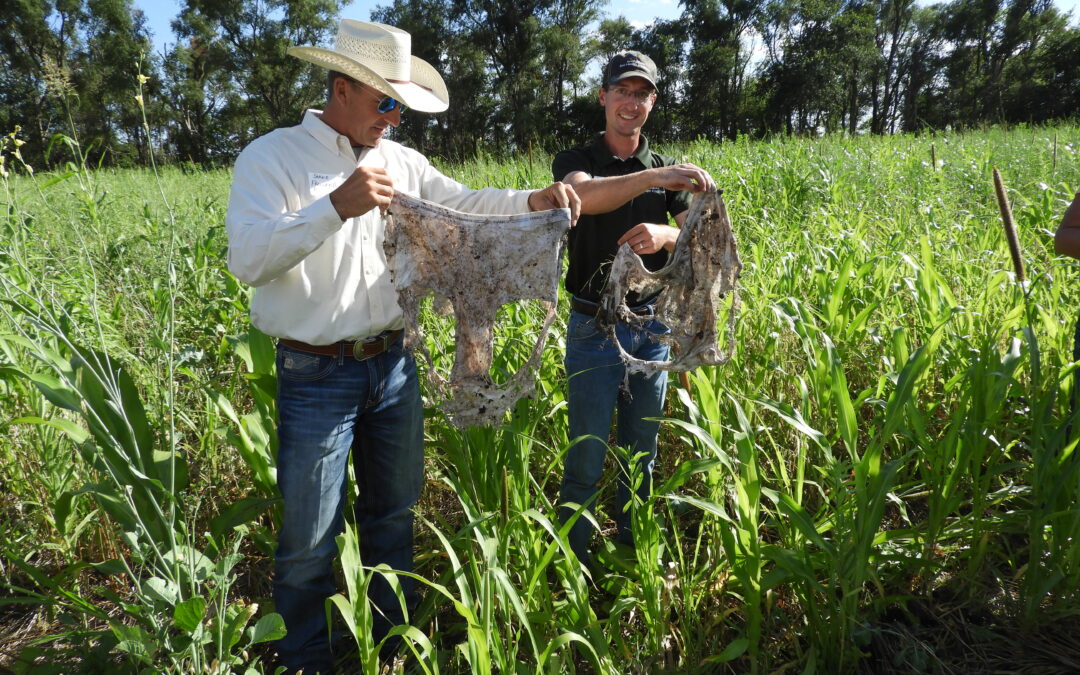
South Dakota Soil Health Coalition Board Vice Chairman Shawn Freeland and SDSHC Soil Health Technician Austin Carlson display the results of a “soil your undies” test at the 2020 Soil Health School near Mitchell, SD. Photo courtesy of SDSHC.
A win-win
The desire to spread that message is what led the Soil Health Coalition to organize the first Soil Health School in 2015. Dan Forgey, SDSHC Board member and longtime agronomy manager at Cronin Farms near Gettysburg, SD, said that the Coalition wanted to offer more hands-on instruction with producers in the state.
“If you can show a few how to do the right things, and then they go home, and then their neighbors seem to catch on,” Forgey said. “So, I think the School is a tremendous win-win for everybody. It’s really helped.”
Forgey said that participants have enjoyed their time at the School.
“The neatest part of it is when you get a chance to talk to participants at the School during off-times, like during lunch or whatever, and how excited everybody is,” he said. “Everybody I’ve talked to thought this was a very positive School, and every year it gets better.”
SDSHC partners with other organizations to make the School a success.
“Natural Resources Conservation Service has been a big help. South Dakota State University Extension, the South Dakota Grassland Coalition – it’s just a team effort,” Forgey said.
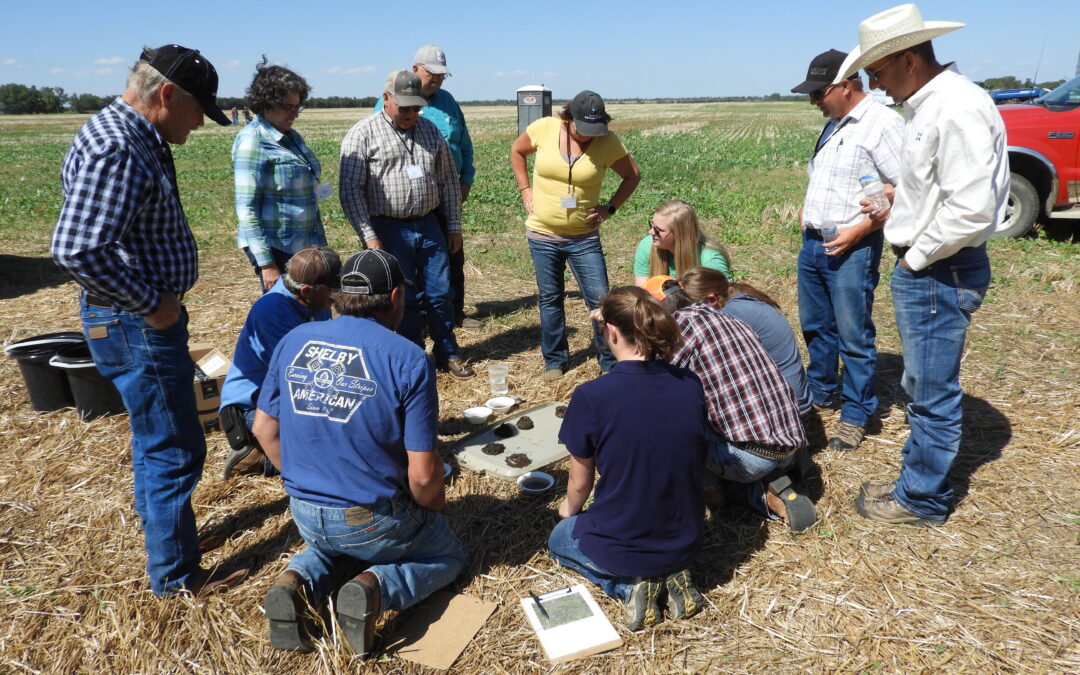
Participants at the 2020 Soil Health School learn how to conduct a slump test to gauge soil structure. Photo courtesy of SDSHC.
Packed with information
NRCS State Soil Scientist Nathan Jones said that Soil Health School is important because it teaches participants how to apply the soil health principles on their own operations.
“We have five soil health principles, but understanding how to apply those principles to your unique situation is one of the things that can come from Soil Health School,” Jones said.
Participants can expect to receive in-depth knowledge on a variety soil health topics.
“You can learn the importance of aggregation. You can learn the importance of rotation. You learn the importance of cover crops,” Forgey said. “The water holding capacity of the soil. The soil structure. The value of leaving some soil armor, leaving some residue. The importance of the carbon-nitrogen ratio in your cover crop mix. And you can just go on and on and on. It’s eye-opening. Every time I go there, I learn something.”
The School is taught by professional soil health experts and producers who are experienced in applying soil health principles. About half the School is spent in classroom instruction, and the other half is devoted to field exercises and plot tours. Participants will learn how to perform soil health field tests, how to calculate available forage in a cover crop, and the details of manure application. There will be plots to demonstrate the effects of residual herbicides on cover crops, plots of corn and sunflowers interseeded with cover crops, a grazing plot, an oats and clover plot, and various plots of warm and cool season cover crops.
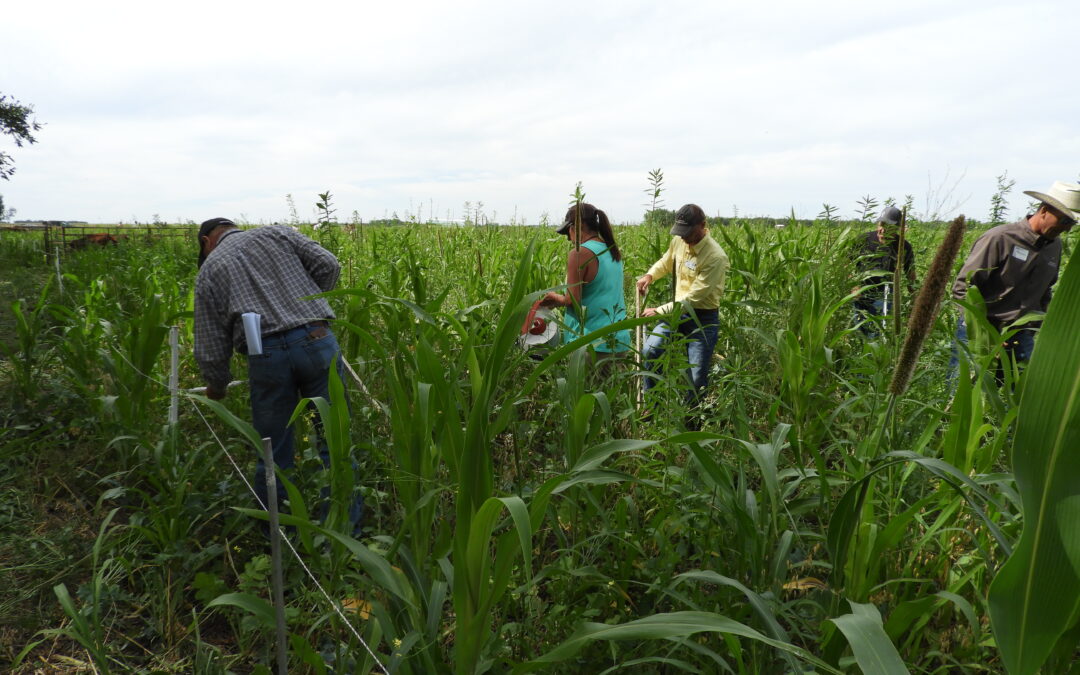
During this exercise at the 2020 Soil Health School near Mitchell, SD, participants learned how to calculate the available forage in a cover crop and then tested their calculations by fencing off a portion of the field and allowing cattle to graze the area for 24 hours. Photo courtesy of SDSHC.
“Dr. Lee Briese will be coming out of North Dakota, and he’s a wealth of knowledge,” Forgey said. “Dr. Dwayne Beck is going to talk on diversity in cropping rotations. Dr. Don Reicosky is going to talk about carbon. I get excited just talking about this School right now.”
The classroom sessions will be held at the Ramada by Wyndham Mitchell Hotel and Conference Center, and the field sessions will be hosted by nearby Stehly Farm, operated by brothers Gene and Craig Stehly.
Jones said the information presented will be useful to participants regardless of where they live in the state.
“We have presenters and Soil Health Coalition members from all over the state of South Dakota,” he said. “Just because you live West River doesn’t mean you’re not going to find something useful from someone who has been practicing soil health principles on the east side of the state.”
Carlson stressed that an important part of the School is the willingness of instructors and other participants to answer questions.
“A lot of the presenters and producers who speak at the event are more than willing to share how they implement some of these practices,” Carlson said. “So, the students can ask specific questions. ‘So how did you start doing the no-till corn? What is your fertilizer situation?’ We have a whole network of people from different areas, different geographic locations in the state of South Dakota people can connect with and figure out how to implement these practices on their own operation.”
“I don’t know any other way where you can get that much information packed into two and a half days,” Forgey said.
To learn more about the 2021 Soil Health School and register, visit www.sdsoilhealthcoalition.org/event-calendar/soil-health-school, email sdsoilhealth@gmail.com or call 605-290-4190. Space is limited, and participants are encouraged to register early.
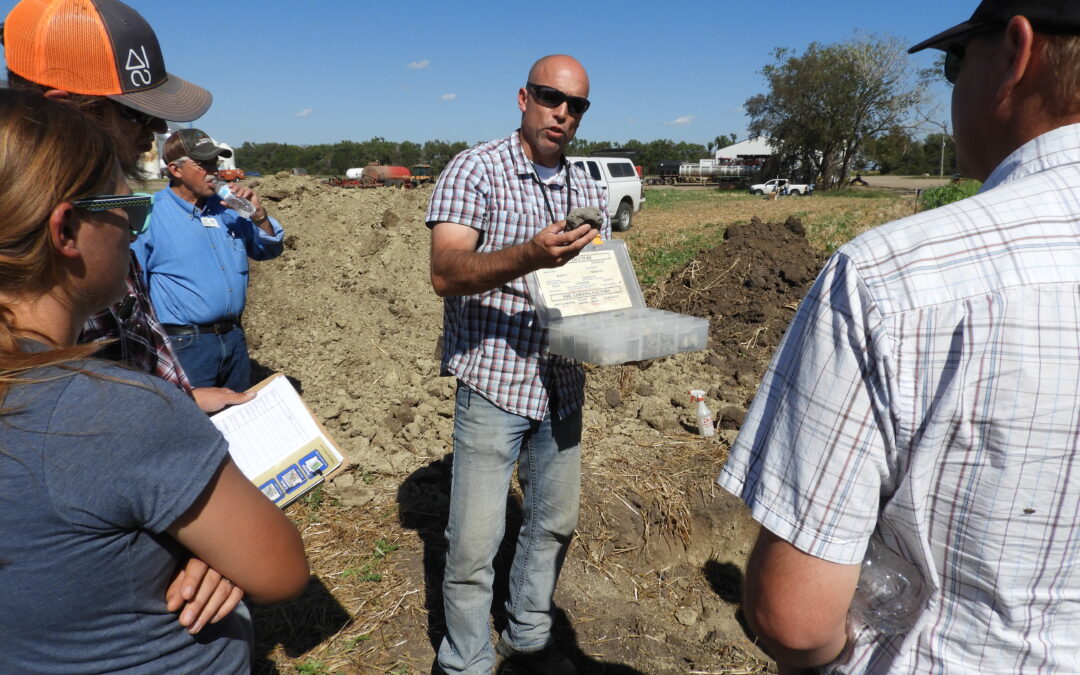
Natural Resources Conservation Service State Soil Scientist Nathan Jones explains the importance of soil structure at the 2020 Soil Health School near Mitchell, SD. Photo courtesy of SDSHC.
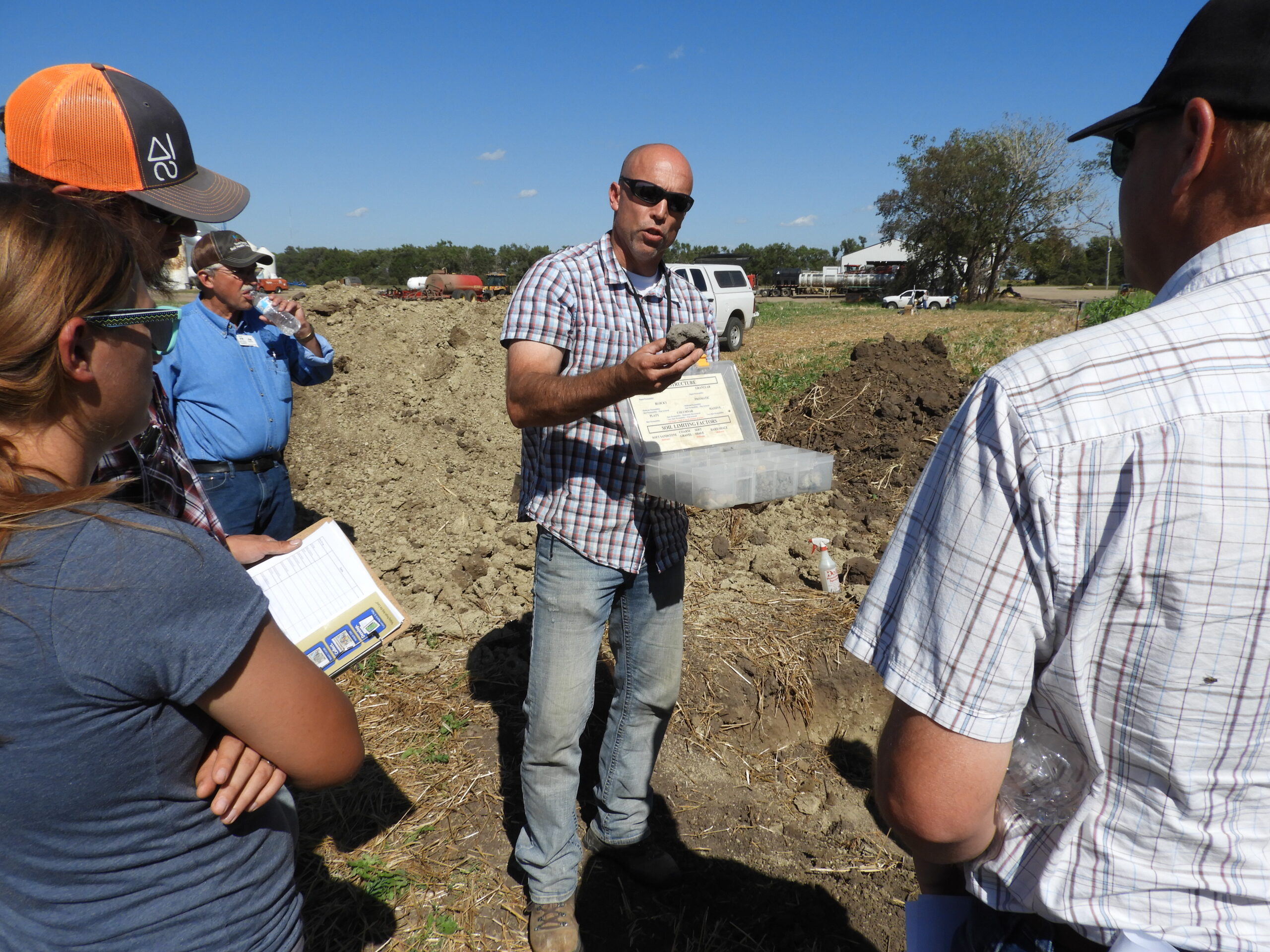
0 Comments